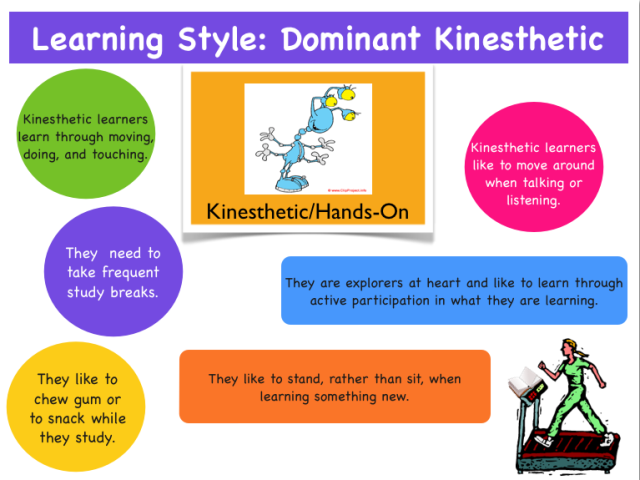


Activities to promote a preschooler's math skills.For more activities your physical child may enjoy, see: And if he enjoys stories when you act them out with him, encourage his dramatic side. If he tends to count using his fingers, let him. So if your child prefers to use art supplies or play with LEGOs to learn about shapes and colors, go with his flow. "Pay attention to activities your child enjoys, and try to approach learning from that point," says Kurt Fischer, director of Mind, Brain, and Education at the Harvard Graduate School of Education. The best way to support your physical child is to indulge his need for activities that allow him to use his hands and body to explore. What can I do to help my physical child excel at preschool and kindergarten? Department of Education found that attending to a child's learning style was one of the few strategies that improved achievement of special education students on national tests. Two elementary schools in North Carolina increased the achievement test scores of students from the 30th percentile to the 83rd percentile over a three-year period. John's University in Jamaica, N.Y., and the evidence is compelling. Many of these studies were based on a specific learning styles program developed by Rita Dunn, director of the Center for the Study of Learning and Teaching Styles at St. Several studies have shown that accommodating a child's learning style can significantly increase his performance at school. These learning styles aren't just theoretical. An auditory learner will remember the information if he can listen to the teacher explain it and answer his questions. A visual learner will grasp the material more quickly by watching his teacher solve a problem in front of him.

When learning about counting, for example, a physical learner may need to use blocks, an abacus, or other concrete materials to practice the new concept. Understanding that your child is a physical learner (though his style may shift over time), and therefore most comfortable using touch and movement to explore the world, can help you play to that strength and work on the other learning styles – auditory and visual – that need more stimulation. Education experts have identified three main types of learners – physical, visual, and auditory. Knowing how your child likes to learn and process information is an invaluable tool that you can use to help him do better in school and develop a love of learning. What are the benefits of knowing my child's learning style? Your child is probably kinesthetic if he is very expressive, he likes to act out stories with his whole body, wiggle, dance, and move his arms or if he jumps around a lot even while listening to you. These kids like to move and get their whole body involved in activities. I’d recommend going through the whole tutorial to better understand great ways of teaching your child, but if you are short on time and want to jump ahead to the list of auditory learning activities, you can do so.Ĭlick the “Forward” button to continue to navigate forward through this tutorial.If your child learns best by immersing himself in a physical activity, he's kinesthetic. Later in this tutorial, I provide a specific list of auditory learning activities you can use if your child has an auditory learning style. If your child is an auditory learner, standard curriculum materials and traditional teaching methods are likely to be effective for helping your child learn. Since reading processing takes place in the language center of the brain, reading is primarily an auditory learning activity, not a purely visual learning activity.Īuditory learners prefer to learn by having someone verbally teach them, or through reading. Other types of information such as pictures, images, maps, charts, diagrams, and melodies are primarily processed in the part of the brain that specializes in perceiving patterns and integrating component parts into a recognizable whole,” ( Dalton & Farmer, 2002, p. It is important to note, “Although reading might seem, on the surface, to be a ‘visual’ activity, research indicates that making sense of a string of syllables, words, sentences, and paragraphs is a left-brain (linear-sequential-analytical) function. Auditory instruction involves lecture, recalling information in sequence, and teaching through reading. Even though less than one-third of the population prefers auditory learning, this is the way almost all schools provide instruction. According to Nusa Maal ( 2004), 20% – 30% of people are auditory learners.


 0 kommentar(er)
0 kommentar(er)
